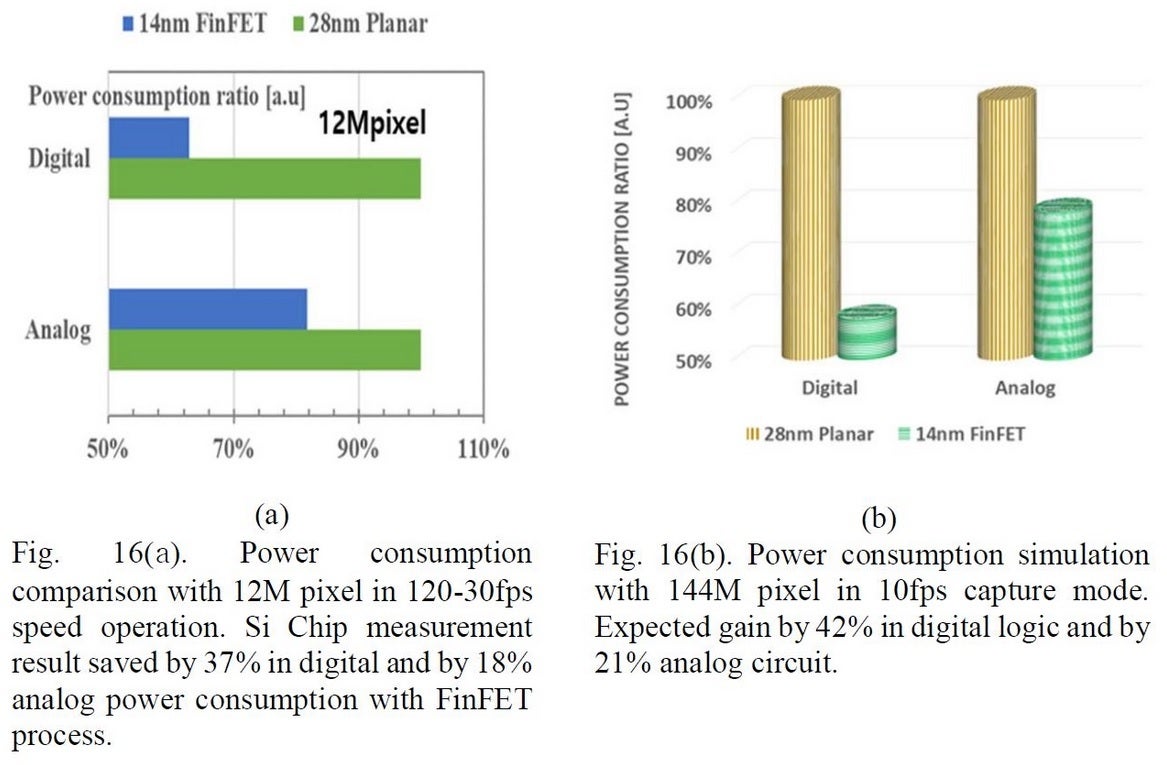Samsung tipped to announce 144MP imaging sensor

As we told you earlier today, the 108MP sensor rumored to be found on the Samsung Galaxy S11+ could employ a 9:1 pixel binning ratio as opposed to the usual 4:1 ratio. This would produce sharp 12MP images with a record pixel size of 2.4 microns. But if Samsung is going to keep using 12MP images, the pixel binning ratio could be rising to 12:1 before the end of next year. That's because graphs tweeted by tipster Ice Universe suggest that the tipster believes Samsung will announce a 144MP image signal processor (ISP) built using the 14nm FinFET process.
Interestingly, it was just last week when Samsung announced a new manufacturing system to produce imaging sensors using the 14nm FinFET process. The process number relates to the number of transistors inside a chip; the smaller the process figure, the larger the number of transistors packed inside an integrated circuit. Chips with more transistors offer improved performance and energy efficiency. The information that Ice Universe included with his tweets bare that out.
The competition among smartphone manufacturers to produce the best photographs in the industry is cutthroat
First, we should point out that the planar method involves building individual components of a transistor and then putting them together. FinFET ICs use "fins" to control the voltage of a chip helping it to increase performance with lower energy consumption. One graph shows that a 12MP ISP made using the 14nm FinFET process uses 37% less energy in digital and 18% less in analog than a 12MP ISP made using the 28nm planar process. A second chart simulates the power consumption of a 144MP ISP in 10fps capture mode. The chip, manufactured using the 14nm FinFET process, consumes 42% less energy in digital and 21% less in analog when compared to a similar ISP built using the 28nm planar method.
And with Qualcomm announcing that the Snapdragon 865 Mobile Platform will support sensors up to 200MP, the rumor about an upcoming 144MP sensor could very well be true. We shouldn't expect to see a 144MP sensor in the Galaxy S11+, but perhaps the technology will be ready for the Galaxy Note 11+.

Samsung is rumored to produce a 144MP imaging sensor using the 14nm FinFET process
The Samsung Galaxy S11 line could be unveiled on February 18th and we could see as many as five cameras on the back of the Galaxy S11+. That would include the aforementioned 108MP primary camera, an improved ultra-wide camera, two telephoto cameras (one using a periscope technology to produce 5x optical zoom) and a Time of Flight (ToF) sensor for improved bokeh blurs on portraits, enhanced AR capabilities and secure 3D mapping. The 108MP sensor will reportedly team up with the telephoto cameras to deliver 50x hybrid zoom and 100x digital zoom. This is a feature that might be called "Space Zoom" by Samsung. A 144MP sensor is sure to take the potential of "Space Zoom" even higher.
Photography remains one of the most competitive battlegrounds in the smartphone industry. Apple took its game to a new level this year by adding the Deep Fusion computational photography feature, an ultra-wide camera, slow-motion selfies and Night Mode. But Samsung and Huawei are poised to set the tone for 2020 with the Galaxy S11 and P40 lines. And while photography has always been an evolving feature of the smartphone industry, this might be the most cutthroat we've seen it since Nokia, Apple, and Samsung battled over photographic supremacy (including low-light capabilities) six years ago. At that time, the Nokia Lumia 1020 featured the most ambitious smartphone camera ever used on a handset to that point. That camera weighed in at 41MP, offered OIS and an aperture of f/2.2. That compared to the 8MP rear camera used on the iPhone 5 and the 13MP camera employed by the Galaxy Note 3.















Things that are NOT allowed: